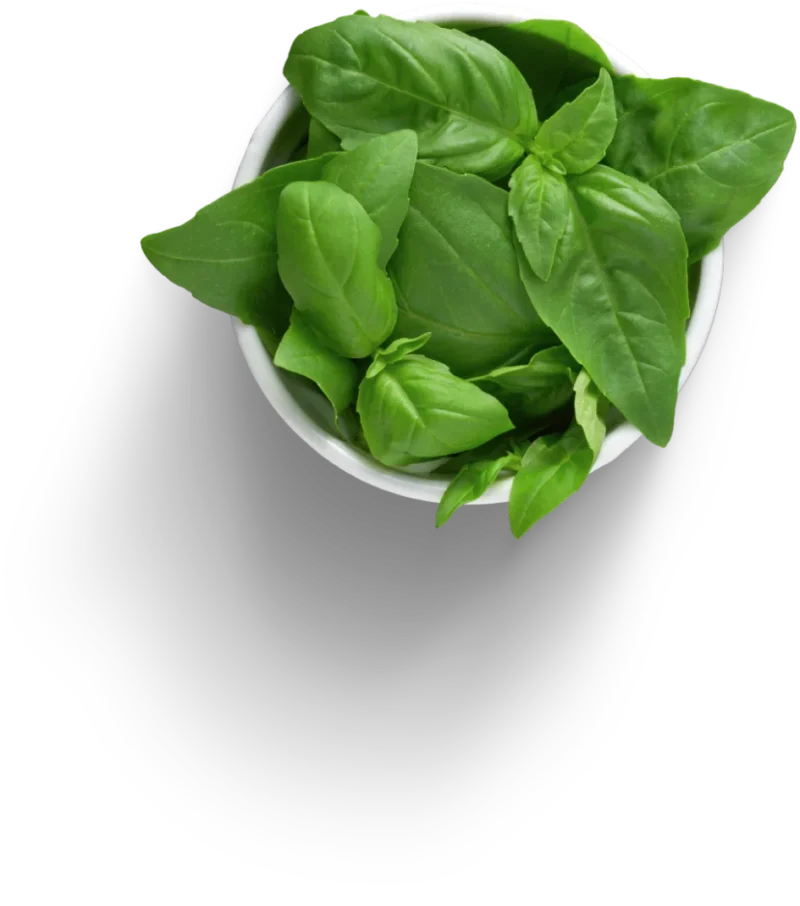As someone who loves cooking and eating pizza, I’ve always been amazed at how herbs can totally change a recipe. Especially pizza!
Over time, I realized the secret to really memorable pizza is choosing just the right herbs. They do more than add flavor – herbs bring pizza to life.
There are tons of herbs to pick from. Today I want to talk about some of my favorites:
- Herbs like oregano, basil, and garlic really make traditional pizza shine.
- Different chili peppers give your pie a spicy kick – try cayenne, Aleppo, Calabrian, ancho or chipotle.
You’ll need to experiment to see which herbs you like best. That’s part of the fun!
I want to share the herbs that for me take simple pizza to a whole new level.
Essential Herbs for Classic Pizza Flavors
Pizza cannot be imagined without some classic herbs, like oregano, basil, and garlic.
Oregano
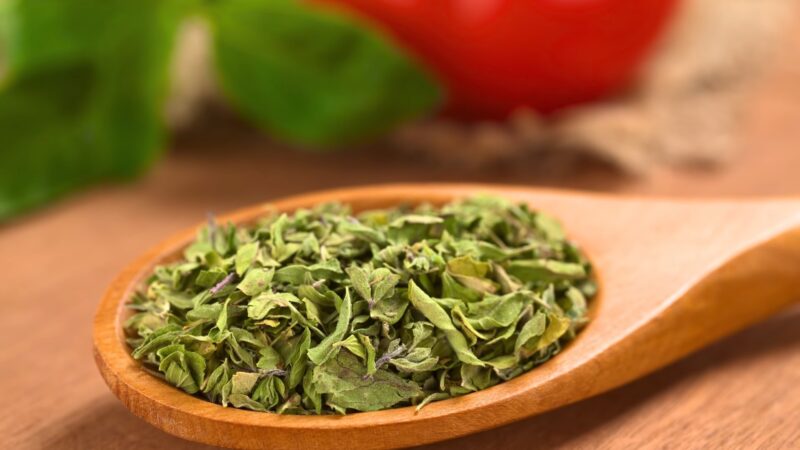
Oregano is like a signature on pizza. As soon as you taste it, you know you’re eating the real deal.
It has an earthy yet slightly bitter taste that pairs perfectly with rich, tangy tomato sauce. Oregano balances everything out and lifts the flavors.
That’s why it’s in pizza kitchens worldwide. Oregano keeps its aromatic potency even with high-heat baking. Its warm, peppery scent infuses each slice.
It blends well with other herbs and spices like garlic, basil and thyme. Together they make the tastiest medley of flavors – complex but satisfying.
Basil
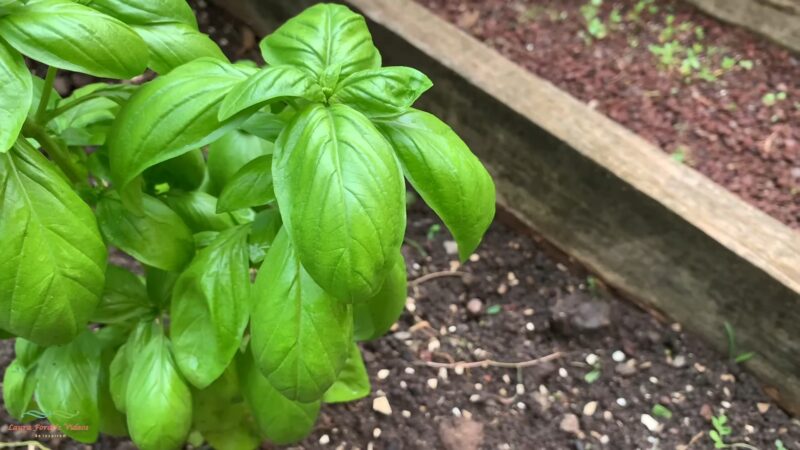
Using basil takes a gentle touch. Unlike oregano, you don’t cook with it. Basil goes on fresh at the end so it keeps that vibrant flavor and scent. Then each bite is a burst of freshness.
Its herb-y taste pairs perfectly with creamy melted cheese and tangy tomato sauce. Basil balances everything out. That’s why people love it so much.
It’s not just about flavor either. Basil brings a beautiful harmony to pizza.
Garlic

You can use more or less garlic – it’s flexible for any taste. As a topping, garlic takes center stage.
Roasted garlic has a natural sweetness that makes pizza fancy. It pairs with everything from earthy mushrooms to meaty toppings. And it balances milder ingredients too.
Herbs for Adding Heat and Spice
For those looking for a spicy flavor, certain herbs will do the trick, even without toppings.
Crushed Red Pepper
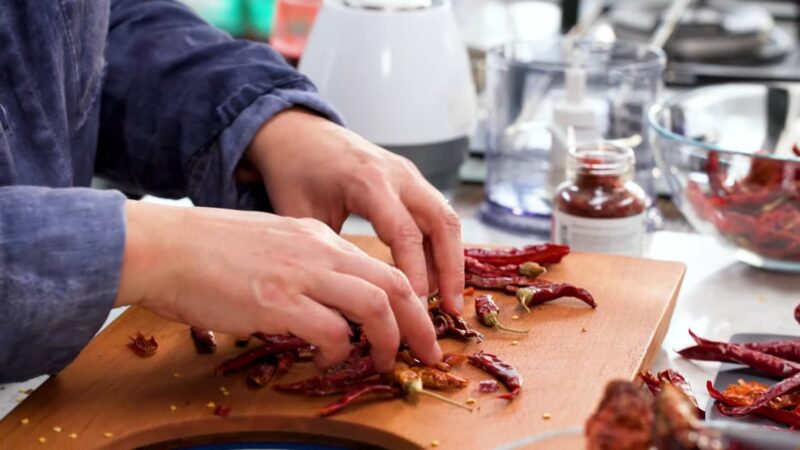
| Variety | Heat Level (Scoville Scale) | Flavor | Best With |
|---|---|---|---|
| Cayenne Pepper | 30,000 – 50,000 | Sharp, distinct heat | Meat-heavy pizzas, like pepperoni or sausage |
| Aleppo Pepper | 10,000 – 20,000 | Moderately hot, fruity | Margherita, vegetable pizzas |
| Calabrian Chili | 25,000 – 40,000 | Warm, smoky heat | Pizzas with robust flavors like anchovy or capers |
| Ancho Chili | 1,000 – 2,000 | Mild, sweet with a hint of smokiness | Chicken, BBQ pizzas |
| Chipotle Pepper | 5,000 – 10,000 | Medium heat, smoky | Pizzas with a Tex-Mex twist, like taco pizza |
Crushed red pepper is such a classic at any pizza party. And for good reason! It gives your pie a spicy kick that takes things to a new level.
Sprinkled on before or after baking, red pepper wakes up the whole dish with heat. It pairs perfectly with all kinds of toppings too – from pepperoni to veggie pizzas. Red pepper adds awesome layers of flavor.
Its heat also cuts through rich cheeses and meats. It adds just enough spice without taking over other ingredients. And you control the heat level.
Chili Flakes
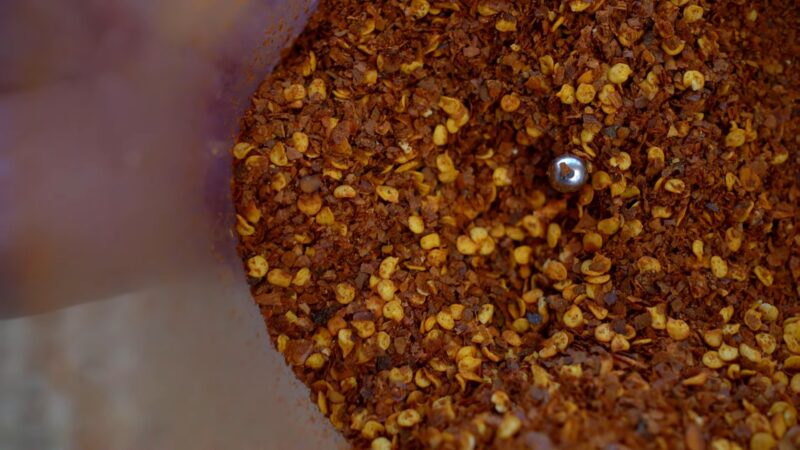
Unlike red pepper, chili flakes come from different chili peppers – each with its own unique spice level and taste.
The best part is chili flakes adapt to any recipe.
Top them on at the end for looks and crunch. Or mix them into the dough for an even heat in every bite. When I experiment, the chili type makes a big difference.
Mild flakes from anchos add gentle warmth without overpowering other flavors. But hotter habs turn pizza into an adventure.
Chili flakes let you dial up or down the spice to your perfect level.
Herbs for Contemporary and Gourmet Pizzas
If you are looking for something that is not as common, you should look towards rosemary and thyme.
Rosemary
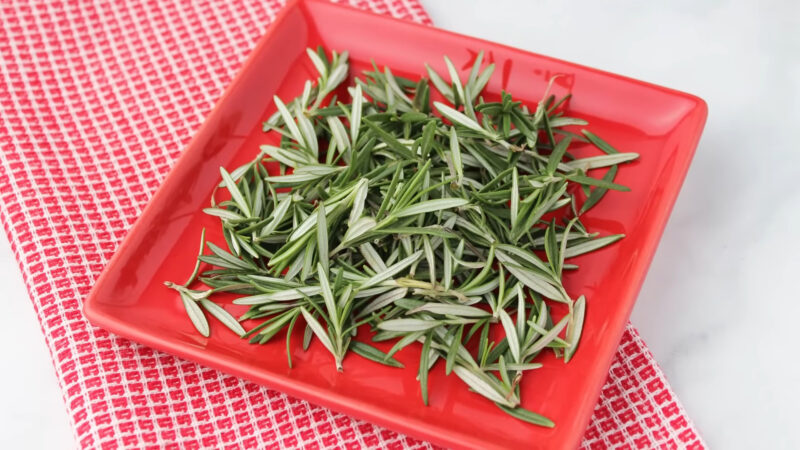
Thin potato slices and rosemary on pizza remind me of traditional Italian countryside food.
It also enhances caramelized onions with depth and complexity. Rosemary is magic with creamy cheeses too, turning a simple pie sophisticated.
The secret is using rosemary sparingly. Even though it’s potent, too much can overpower. A light sprinkle of finely cut leaves shares its delightful scent without dominating.
Thyme
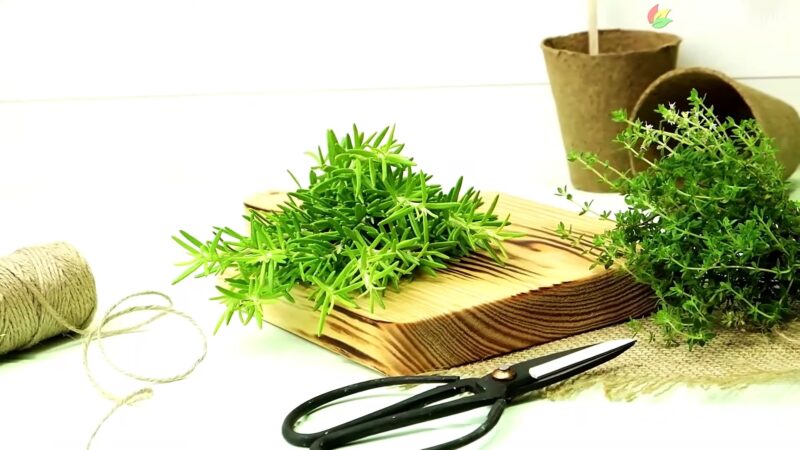
Thyme beautifully complements a wide string of toppings. Its essence, coupled with hints of lemon and mint, provides a unique flavor that is less overpowering than some other herbs like rosemary.
As such, it’s an excellent choice for pizzas that feature milder toppings.
Herbal Blends
A combination of different herbs is a shortcut to proper seasoning.
Italian Seasoning
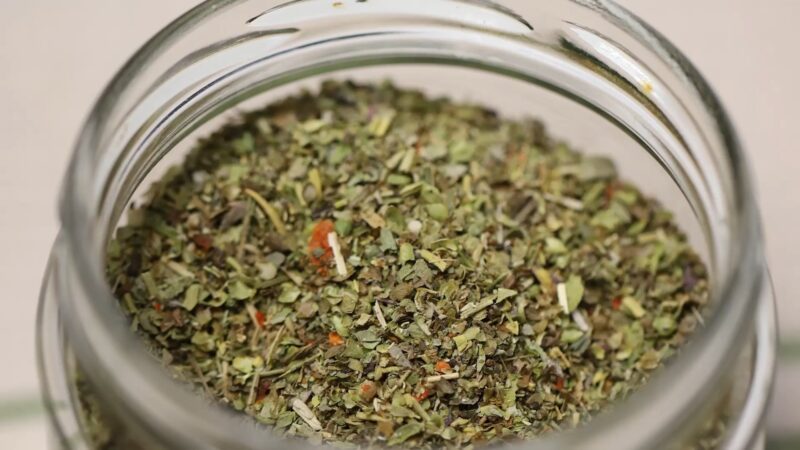
This blend usually includes oregano, basil, and rosemary – the big three. Then it often adds garlic, thyme, and a pinch of chili flakes. All together they make the most amazing flavor.
I love how it makes cooking easier. Instead of measuring lots of herbs, you just use this one blend. That’s perfect when time is short.
Toss it in sauce for deep flavor down to the base. Sprinkle it on top for aromatic goodness. Or mix it right into the dough so each bite of the crust is tastier.
Creating Custom Herb Mixes
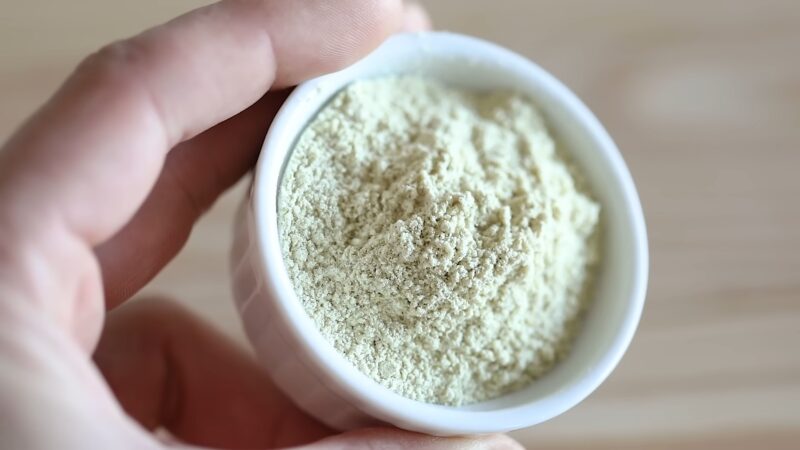
Basil, oregano, and thyme are a good starting trio. Their sweet, earthy, and minty tastes provide a classic Italian base.
From there, have fun adding more layers. A pinch of chili flakes wakes things up with heat. Garlic powder boosts savory umami.
The best part is experimenting. Each herb brings its own taste – you learn how they blend or contrast. Rosemary gives pine and lemon notes. Marjoram adds sweetness.
Sage could surprise you with its peppery side. Understanding herb flavors is part of the creative process.
Fresh vs. Dried Herbs
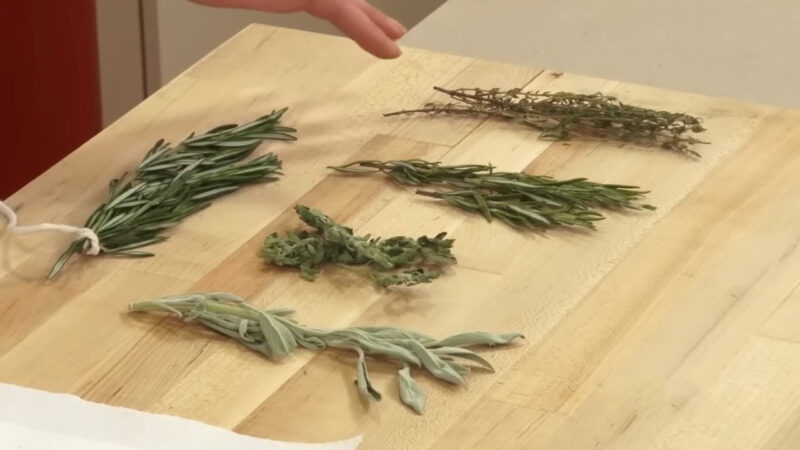
Fresh herbs are famous for their bright, lively tastes. Their aromas shine too. But fresh herbs can be more delicate.
That’s because their lighter flavors can get lost if added too soon when cooking. So fresh herbs work best added at the end or as a topping.
This protects their freshness so those bold flavors stay front and center in each bite. You don’t want all that amazing freshness to fade, right?
By using fresh herbs later in the process, their flavor stays strong instead of dulling out.
| Flavor | Bright, vibrant, and aromatic | Concentrated and intense |
| Best Added | Towards the end or as a garnish | During the cooking process |
| Suitability | Best for quick-cooking or raw dishes | Ideal for dishes with longer cooking |
| Intensity | More delicate and subtle | Stronger and more pronounced |
| Preservation | Best used soon after purchase | Long shelf life |
| Quantity | Generally more than dried herbs | Less, due to concentrated flavor |
When moisture is removed through drying, the taste of dried herbs becomes more packed and powerful.
Because the flavor is so rich, it’s best to add them during the cooking part. That gives their intense taste plenty of time to soak into the whole dish.
Long, slow cooking is perfect for dried herbs. They can take the heat without issue and release flavor gradually.
Summary
Herbs are magic on pizza, turning a simple pie into a taste sensation.
I say go for it and test out all kinds of combos. Mix, match, keep learning about what flavors you love best. Because the tastiest pizza is the one that fits your own personal taste.
Don’t be afraid to follow your curiosity and see where it leads.
Related Posts:
- What Methods You Should Use to Reheat Pizza Properly?
- Pizza and Wine: A Classic Duo - Discover the Best…
- The Authentic Neapolitan Pizza - Naples Best Kept Secret!
- 20+ Best Gluten-Free Pizza Recipes - Flavorful Favorites!
- The Best 14 Vegan Pizza Toppings That Are Healthy,…
- What Fish Can You Put On Pizza? The 7 Best Seafood Toppings




